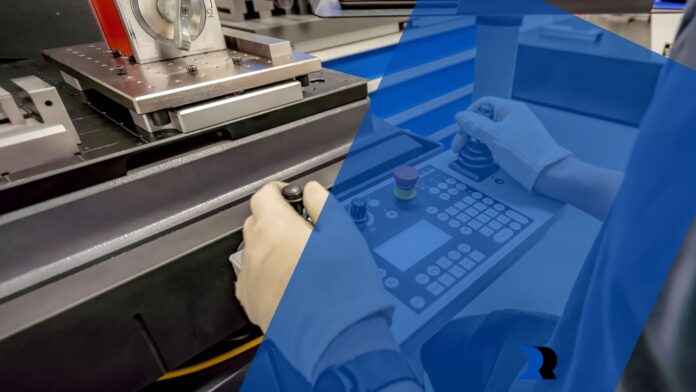Optical alignment is critical in ensuring accuracy, performance, and efficiency in precision work. Whether in manufacturing, aerospace, or scientific research, the need for exact measurements and alignments can be the difference between success and failure. For instance, misalignment can lead to equipment malfunctions, product defects, or even system-wide failures. This makes it essential for professionals in precision industries to understand the importance of optical alignment and the tools used to achieve it.
Read on to learn why optical alignment matters in precision work.
The Critical Role of Optical Alignment in Precision Work
Optical alignment refers to aligning the optical elements or components within a system to ensure that light paths are perfectly adjusted. This practice is fundamental in maintaining the performance of various optical instruments and systems, such as telescopes, microscopes, and laser setups.
Also, accurate optical alignment is paramount to achieving the desired precision, and businesses often seek out professional solutions from providers like Optical Perspectives Group for high-quality results.
On the other hand, optical alignment is integral to precision work for several reasons. These include:
Ensures Accurate Measurements
Precise measurements are essential in fields such as manufacturing, engineering, and scientific research. Even the slightest misalignment in optical systems can lead to incorrect readings, compromising a project’s quality and integrity.
Also, when systems like lasers, lenses, or mirrors are misaligned, it affects the path of light, resulting in inaccurate data. For example, in laser-guided measurement systems, incorrect alignment can alter the beam’s trajectory, leading to flawed measurements that may affect critical processes like quality control in manufacturing.
Reduces Operational Errors and Downtime
Misaligned optical systems are prone to frequent errors and breakdowns, which can disrupt operations. In industries that rely on continuous and high-precision processes, such as semiconductor manufacturing or aerospace engineering, downtime caused by alignment issues can be costly.
Therefore, proper optical alignment is essential. It helps reduce the likelihood of such errors and ensures that equipment functions optimally. Consequently, it minimizes the need for frequent recalibrations and repairs, thereby enhancing operational efficiency.
Enhances Product Quality
In precision manufacturing, particularly in fields like automotive and aerospace, product quality is heavily dependent on the accuracy of optical measurements and processes. Optical alignment ensures that the systems used in production are perfectly calibrated to produce components that meet exact specifications. For instance, in optical lenses for cameras or medical equipment, misaligned systems can result in defective products that don’t meet the required standards.
Therefore, using proper alignment tools guarantees that each product is manufactured with the highest level of precision.
Facilitates Advanced Research and Development
Optical alignment is crucial for experiments requiring precise data collection and analysis in research and development. For example, researchers working with microscopes or spectrometers must ensure that light paths are aligned correctly to obtain accurate results.

Misalignments can introduce errors that compromise the validity of experimental findings.
Hence, optical alignment is crucial because it allows scientists and engineers to focus on innovation without being hindered by technical inaccuracies in their equipment.
The Impact of Optical Alignment on Various Industries
The significance of optical alignment techniques extends across multiple sectors, each benefiting from the precision and efficiency it brings. Here are some of the key industries where optical alignment plays an indispensable role:
Manufacturing and Industrial Applications
In manufacturing, precision is key to producing high-quality products and components. Optical alignment ensures that machines like laser cutters, 3D printers, and inspection tools operate with the highest level of accuracy.
By maintaining proper alignment, manufacturers can ensure that parts are produced to exact specifications, reducing the likelihood of defects and waste. Optical alignment also aids in quality control by ensuring that inspection systems accurately assess products, leading to fewer rejections and higher consistency.
Aerospace and Defense
The aerospace and defense industries rely on precision optical navigation, targeting, and communication systems. Misalignments in these systems can result in catastrophic failures, as even minor deviations can throw off the accuracy of complex systems. For example, in missile guidance systems or satellite communications, optical alignment is essential for ensuring that signals and beams travel in their intended paths. Proper alignment in these systems is crucial for national security and safety.
Medical and Healthcare Technology
Precision is essential for diagnostic and therapeutic technologies in the medical and healthcare field. Instruments like microscopes, endoscopes, and laser surgical tools depend on correct optical alignment. Misalignment can result in inaccurate diagnoses or ineffective treatments, potentially putting patients at risk.
As such, optical alignment in medical equipment ensures that these tools perform optimally, which provides healthcare professionals with the precision they need to deliver safe and effective care.
Scientific Research
Scientific research often involves experiments that rely on precision optical instruments, such as telescopes, spectrometers, and particle accelerators. Misaligned optical systems can introduce errors in experimental data, leading to incorrect conclusions or wasted resources.

Proper optical alignment methods ensure researchers can collect accurate data and confidently conduct experiments. This is especially important in fields like physics, where the margin for error is minimal, and precise optical measurement is crucial for advancing knowledge.
Final Thoughts
Optical alignment is fundamental to precision alignment work across various industries, from manufacturing and aerospace to healthcare and scientific research. It ensures that optical systems operate with the highest level of accuracy, reduce errors, and enhance product quality.
Lastly, by keeping the information mentioned above in mind, professionals can achieve the perfect alignment needed to maintain the performance of critical equipment. As technology evolves, optical alignment will remain a cornerstone of innovation and precision in the modern world.


